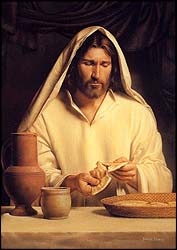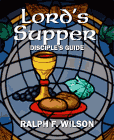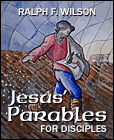Free E-Mail
Bible Studies
Beginning the Journey (for new Christians). en Español
Old Testament
Abraham
Jacob
Moses
Joshua
Gideon
David, Life of
Elijah
Psalms
Solomon
Songs of Ascent (Ps 120-135)
Isaiah
Advent/Messianic Scriptures
Daniel
Rebuild & Renew: Post-Exilic Books
Gospels
Christmas Incarnation
(Mt, Lk)
Sermon on the Mount
(Mt 5-7)
Mark
Luke's
Gospel
John's Gospel
7 Last Words of Christ
Parables
Jesus and the Kingdom
Resurrection
Apostle Peter
Acts
The Early Church
(Acts 1-12)
Apostle Paul
(Acts 12-28)
Paul's Epistles
Christ Powered Life (Rom 5-8)
1 Corinthians
2 Corinthians
Galatians
Ephesians
Vision for Church
(Eph)
Philippians
Colossians,
Philemon
1
& 2 Thessalonians
1 & 2 Timothy,
Titus
General Epistles
Hebrews
James
1 Peter
2 Peter, Jude
1, 2, and 3 John
Revelation
Revelation
Conquering Lamb of Revelation
Topical
Glorious Kingdom, The
Grace
Great Prayers
Holy Spirit, Disciple's Guide
Humility
Lamb of God
Listening for God's Voice
Lord's Supper
Names of God
Names of Jesus
Christian Art
About Us
Podcasts
Contact Us
Dr. Wilson's Books
Donations
Watercolors
Sitemap
1. My Body, My Blood -- Literal or Figurative?
y Dr. Ralph F. WilsonAudio (21:00)
https://www.jesuswalk.com/mp3files/lords-supper/1_body_blood.mp3
 Simon Dewey (British painter, 1962- ), Last Supper (2001) |
Let's begin our study of the Lord's Supper with Jesus' basic statement at the Table relating bread to his body and wine to his blood. We can analyze this statement as follows:
|
Bread |
has a relationship to |
Jesus' Body |
|
Wine |
has a relationship to |
Jesus' Blood |
The Words of Institution
Let's consider his Words of Institution of the Lord's Supper, that is, the words by which Jesus began and commanded continuance of this observance.
|
Matthew 26 |
Mark 14 |
Luke 22 |
1 Cor 11 |
|
26While they were eating, Jesus took bread, gave thanks and broke it, and gave it to his disciples, saying, "Take and eat; this is my body." |
22While they were eating, Jesus took bread, gave thanks and broke it, and gave it to his disciples, saying, "Take it; this is my body." |
19And he took bread, gave thanks and broke it, and gave it to them, saying, "This is my body given for you; do this in remembrance of me." |
23bThe Lord Jesus, on the night he was betrayed, took bread, 24and when he had given thanks, he broke it and said, "This is my body, which is for you; do this in remembrance of me." |
|
27Then he took the cup, gave thanks and offered it to them, saying, "Drink from it, all of you. 28This is my blood of the covenant, which is poured out for many for the forgiveness of sins. |
23Then he took the cup, gave thanks and offered it to them, and they all drank from it. 24"This is my blood of the covenant, which is poured out for many," he said to them. |
20In the same way, after the supper he took the cup, saying, "This cup is the new covenant in my blood, which is poured out for you. |
25In the same way, after supper he took the cup, saying, "This cup is the new covenant in my blood; do this, whenever you drink it, in remembrance of me." |
As you consider Jesus' words, what relationship or point of correspondence is there between the bread and his body? Between the wine and his blood?
As I suggested in the introduction, theologians have spent lots of energy arguing about this. As I think about it, I comes down to two possibilities, using the bread in our thoughts:
|
Bread |
has a literal relationship to |
Jesus' Body |
|
Bread |
has a figurative relationship to |
Jesus' Body |
The Argument for a Literal Interpretation of the Words of Institution
The largest branches of the Church, the Roman Catholic and Eastern Churches, interpret Jesus' words literally, that is, they contend that the verb "is" must be taken literally, as "This is my body" rather than "This signifies my body." Catholic theologians offer several arguments for taking this literally:
- Jesus discourse in John 6:54-57 uses very literal language, which can only refer to the Eucharist. Since the crowd of disciples interpreted Jesus as espousing some kind of cannibalism and stopped following him as a result, Jesus must have meant, "eat my flesh and drink my blood" literally, that is, looking forward to partaking of the Lord's Supper.1 We'll consider this passage in detail in chapter 9.
- Nowhere in the Words of Institution is a hint that a figurative interpretation should be considered. Therefore, in the absence of any sign that this should be figurative, we must take it literally.
- Paul's language, "Guilty of the body and blood of the Lord" (1 Corinthians 11:27) requires that Christ is corporeally (i.e. bodily) present in the Lord's Supper.
- The Church has taken the Words of Institution literally rather than figuratively from the earliest times. This is an argument from tradition, of course, not from Scripture. But how the earliest churches understood the Lord's Supper may give us some clues to how the Apostles understood Jesus' command. (See my "Excursus: A Brief History of Interpretation of the Real Presence." www.jesuswalk.com/lords-supper/history-real-presence.htm)
The Argument for a Figurative Interpretation of the Words of Institution
But there's another possibility, which has been carefully reasoned by Protestant theologians:
- Jesus' words should be seen in the context of many parables and figurative references . For example, Jesus says, "I am the Vine" (John 15:1), the Door (John 10:9), the Bread (John 6:41). Jesus' main method of teaching was through parables; for Jesus, parables were not the exception but the rule, though when necessary he explained the parables to his disciples (Mark 4:34).
- Jesus held the bread in his hand when he said "This is my body," at the same time that the disciples could see his physical body. There was a clear distinction between the two. The context therefore requires a figurative interpretation.
- The phrase "this cup is a new covenant" (Luke 22:20) surely doesn't mean that the physical cup is the new covenant. That phrase is clearly symbolic and figurative. So are the words about the bread being Jesus' body.
- John 6:27-59 uses bold terms to explain a spiritual feeding on Christ . This passage concludes, "The Spirit gives life; the flesh counts for nothing. The words I have spoken to you are spirit and they are life" (John 6:63), suggesting a figurative feeding rather than a literal, bodily feeding. Other indicators in the passage also point to a figurative interpretation. We'll examine this passage more fully in chapter 9.
- Paul's reference to "sinning against the body and blood of the Lord" in 1 Corinthians 11:17 does not require the Real Presence to explain it.
- The Real Presence (rather than a spiritual presence) in the elements isn't taught in the early church for at least 75 years and perhaps twice that. If the Real Presence and transubstantiation were the church's primitive understanding, you'd expect much earlier a clear exposition of this doctrine. Even after an understanding of the Real Presence was common, many Church Fathers recognized a spiritual interpretation of the Words of Institution. (See my "Excursus: A Brief History of Interpretation of the Real Presence.")
I know from personal experience the need to justify one's doctrine and practice by Scripture, even when the Scriptures don't quite fit. Looking back, I can see places where I've been guilty of that. But to me, the arguments for a figurative interpretation of the Words of Institution are quite compelling. I believe Jesus was speaking figuratively and symbolically.
|
Remember, we have agreed to respectfully and lovingly disagree with one another. What do you know? Perhaps we can learn from and be enriched by each other's understanding. (Note: I will exclude from the online discussion any who, in my opinion, are sarcastic and unloving in their manner.) Q1. How does your particular understanding of the bread and the wine (literal or figurative) help you grow closer to Christ when partaking of the Lord's Supper? (Note: This
question is not your excuse to argue, but to learn from one another's personal
experience of partaking.)
|
The Body and Blood of the Lord
Having said that, we must realize that the Apostle Paul himself used the phrase, "the body and blood of the Lord" (1 Corinthians 11:27) and "body of Christ" and "blood of Christ" (1 Corinthians 10:16) with reference to the elements of the Lord's Supper. He used it figuratively, I believe. But nevertheless, his very words should keep us from a careless, flippant manner towards the elements of communion. This is a sacred meal we eat before the Lord in obedience to his words. While the elements are bread and wine, yet they are more to us, since for us they are reminders of the extent to which Jesus went for our salvation. When the minister prays a prayer of consecration, such as, "Set apart these elements from a common to a sacred use," they become sacred in the sense that we must treat them with reverence and respect, not with callous disregard as did the sinning Corinthians who Paul reprimands.
Not "Mere Symbols"
It's easy to react against some abuse or misunderstanding with an opposite but equal extreme. Some Protestants have come to refer to the elements of the Lord's Supper as "mere symbols," actually using "mere" (an adjective meaning "being nothing more than" to modify the word "symbols," as if symbols are to be despised and minimized). How sad. Millard Erickson cites one Baptist leader who calls such an extreme "the doctrine of the Real Absence" of Christ in the sacrament.2
As my colleague Gerald Frye has put it, "The elements are the form, but there is a power in them." The power is the healing, comforting, challenging presence and working of Jesus Christ the Lord through the Holy Spirit. To casually minimize what Jesus himself has instituted is deplorable. Rather, we must seek the One who gives power in the sacraments or ordinances, and understand as we may never before have understood what He intends to do in us through them.
|
Q2. How can an extreme symbolic interpretation cause a person to have too little respect for the Lord's Supper and its elements? Where is the balance, do you think?
|
Actions on the Bread and Wine
The Real Presence controversy is based on interpreting a verb of being ("is"), though the original Aramaic that Jesus would have spoken wouldn't have contained such a verb.3 The real key to understanding Jesus' intent lies instead in observing the action verbs contained in the Words of Institution. Most of these are pretty straightforward words -- no big mystery, no deep meanings.
-
"Took,"
"Gave,"
So far we've looked at the words used about the elements themselves. Most of these refer to the mechanics of Jesus praying, taking hold of the element, preparing it (by breaking), and asking the disciples to partake of it.
Words of Sacrificial Offering
But now Jesus uses terms from the vocabulary of sacrificial offerings to describe the meaning of these elements:
"Given"
(Luke), didōmi, here used with the meaning, "to dedicate oneself for some purpose or cause, give up, sacrifice."11 Used with a similar meaning at 2 Corinthians 8:5; Matthew 20:28; Mark 10:45; John 6:51; 1 Timothy 2:6; Galatians 1:4; Titus 2:14."For" is the preposition huper, "a marker indicating that an activity or event is in some entity's interest, for, in behalf of, for the sake of someone or something.12
"Broken for"
(KJV), klaō, appears as a variant reading in 1 Corinthians 11:24b. We'll discuss this further in chapter 4."Poured out"
("shed," KJV), ekcheō, "cause to be emitted in quantity, pour out." In the cultic sense, "pour out" (compare Leviticus 4:7), especially of Jesus' death, "blood shed for (the benefit of) many..."13 The preposition here also is also huper, "in behalf of.""Forgiveness"
("remission" KJV), aphesis, is actually a noun, but it describes an action. It means, "the act of freeing from an obligation, guilt, or punishment, pardon, cancellation."14We'll study these in detail in chapters 4 and 5, but here observe that the bread represents Jesus' body that is "given for" the disciples in a sacrificial sense. The wine represents Jesus' blood that was "poured out" or "shed" for forgiveness of sins. Both verbs clearly indicate Jesus' intention that his disciples understand his death as an intentional sacrifice.
|
Q3. Which action words used to describe the elements of the Lord's Supper, teach us that we are to be thinking of Jesus' sacrifice of atonement, when we partake of the Lord's Supper? |
Verbs of Eating and Drinking
Jesus is quite clear that the disciples are to eat the bread and all of them are to drink of the cup. What sense are we to make out of his command to eat the elements? Why? Ingesting the bread and wine, in my view:
- Is symbolic of nourishment and sustenance .
- Connects us to Christ's sacrifice on the cross in some mystical way that we'll explore in greater depth in chapter 3.
- Is a powerful way of remembering Christ's death , which we'll develop in chapter 2.
- Is a way of renewing the Covenant, in a way reminiscent of how covenants in the ancient Near East that were ratified by the parties, eating and drinking together. We'll develop this further in chapter 6.
- Is a way to look forward to the fellowship of all the saints with Christ on the Last Day -- variously pictured as the Marriage Supper of the Lamb and eating with Abraham, Isaac, and Jacob. We'll develop this further in chapter 10.
- Keeps us focused on Christ's death . There's a tendency to turn Christianity away from a central focus on forgiveness of our sins into a society for moral improvement. The bread and wine remind us of our roots, of where we've been, of Christ's unimaginable love for us, of what Christ has done for us, and where we're headed eternally.
|
Q4. Which part of the meaning of the Lord's Supper is most valuable for you at this point in your spiritual journey when you partake of and meditate on the Lord's Supper?
|
 Available as e-book and paperback. |
This is my body, given for you, says our Lord. This is my blood of the new covenant, shed for many for the forgiveness of sins. Take, eat. Drink deeply of it, all of you.
Prayer
Lord Jesus, how we your children have sinned against the body and blood of the Lord in the way we have become divided over what you have given to unite us. Forgive us, Lord. Forgive me. Bring peace to your body, and understanding to our inner hearts, that we might know the power that you have placed in the bread and wine, your body and your blood. In Jesus' name, we pray. Amen.
References
Common abbreviations and references. www.jesuswalk.com/lords-supper/refs.htm
- J. Pohle, "The Real Presence of Christ in the Eucharist," Catholic Encyclopedia (1908 edition). Catholic New Testament scholar Raymond E Brown, John 1:281-294 argues that the Eucharistic elements are clearly present in these verse.
- Millard J. Erickson, Christian Theology (Second Edition; Baker Academic,1998), p. 1130.
- Hill, Matthew, p. 339. Marshall, Last Supper, p. 85.
- BDAG 583-585, 1.
- BDAG 407, 2.b. Morris, Matthew, pp. 658-659, footnote 52.
- BDAG 415-416, 2.
- BDAG 546.
- BDAG 242, 2.
- BDAG 396, 1.a.
- BDAG 814, 1.
- BDAG 242, 10.
- BDAG 1030-1031.
- BDAG 312, 1.a.
- BDAG 155, 2.
Copyright © 2025, Ralph F. Wilson. <pastor![]() joyfulheart.com> All rights reserved. A single copy of this article is free. Do not put this on a website. See legal, copyright, and reprint information.
joyfulheart.com> All rights reserved. A single copy of this article is free. Do not put this on a website. See legal, copyright, and reprint information.
 |

|
In-depth Bible study books
You can purchase one of Dr. Wilson's complete Bible studies in PDF, Kindle, or paperback format -- currently 48 books in the JesusWalk Bible Study Series.
Old Testament
- Abraham, Faith of
- Jacob, Life of
- Moses the Reluctant Leader
- Joshua
- Gideon
- David, Life of
- Elijah
- Psalms
- Solomon
- Songs of Ascent (Psalms 120-134)
- Isaiah
- 28 Advent Scriptures (Messianic)
- Daniel
- Rebuild & Renew: Post-Exilic Books
Gospels
- Christmas Incarnation (Mt, Lk)
- Sermon on the Mount (Mt 5-7)
- Luke's Gospel
- John's Gospel
- Seven Last Words of Christ
- Parables
- Jesus and the Kingdom of God
- Resurrection and Easter Faith
- Apostle Peter
Acts
Pauline Epistles
- Romans 5-8 (Christ-Powered Life)
- 1 Corinthians
- 2 Corinthians
- Galatians
- Ephesians
- Philippians
- Colossians, Philemon
- 1 & 2 Thessalonians
- 1 &2 Timothy, Titus
General Epistles
Revelation
Topical

 To be notified about future articles, stories, and Bible studies, why don't you subscribe to our free newsletter, The Joyful Heart, by placing your e-mail address in the box below. We respect your
To be notified about future articles, stories, and Bible studies, why don't you subscribe to our free newsletter, The Joyful Heart, by placing your e-mail address in the box below. We respect your